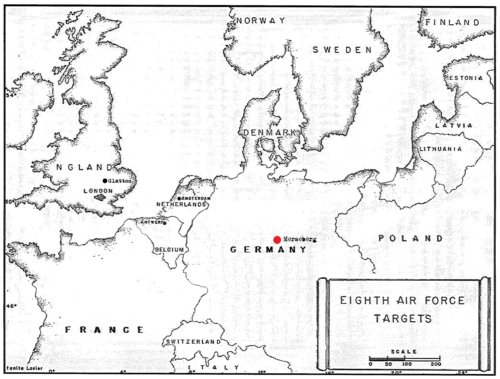TARGET: SYNTHETIC OIL PLANT
MERSEBERG, GERMANY
12 DECEMBER, 1944

The primary target was the synthetic oil plants at Lutzkendorf, and the briefed secondary PFF target was the synthetic oil plants of Merseburg. The formation of thirty-six planes comprised the 94th A Combat Wing, with Major Stann as Air Commander and Lt. Jeffers as pilot.
The route over England was flown approximately as briefed. At the Division assembly, the Group assumed its proper position.
En route to the IP, the group was about ten to fifteen miles north of course. This was necessary in order to remain in proper position in the Division formation. About seven minutes time was gained before reaching the IP, because winds were not as briefed. Just before the Group’s arrival at the IP, the lead was turned over to the deputy, because the PFF equipment of the lead aircraft was not functioning properly.
The IP was not crossed as briefed, because the Group was forced to the left of course by preceding groups. The attempt to come back on course on the bomb run was not successful. The formation again swung wide to the left in order to gain sufficient interval behind the group ahead, and consequently, came back on course to the target on a different heading than briefed. Cloud coverage was ten tenths, and it was necessary to bomb in group formation using PFF equipment. The lead squadron released from 26,200 feet. Flak was moderate and seven aircraft sustained damage.
The aircraft piloted by Lt. Montell C. Higgins, flying lead of the low box, feathered No.4, dropped out, but trailed the formation before disappearing. The plane later crashed near Sensweiler, Germany, taking the life of Lt. Higgins.
12 December was designated as Mud Control Day. Any vehicle driver reported as having driven off the concrete was ordered to report to the utilities office for mud control detail.
Lt. Edwin B. Benson, 457th/749th bombardier: Mission 19. Merseberg. Oil Plant. Time 9.30. High. Lead. FLAK
